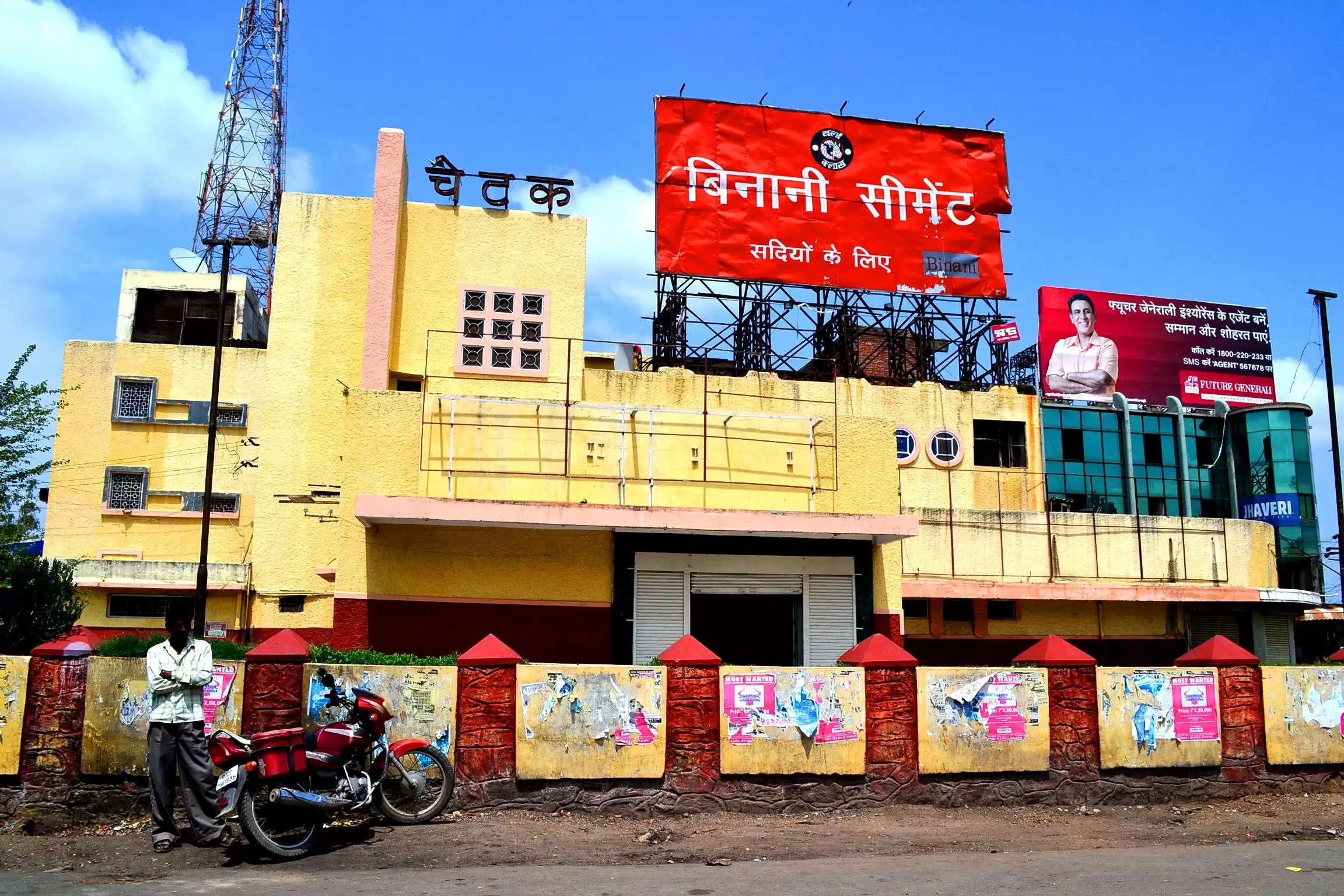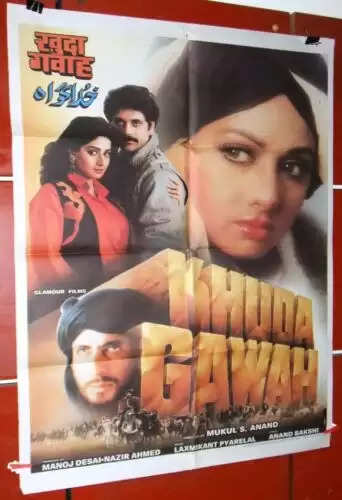Going Down Memory Lane, Let us Visit the History of Cinema in Udaipur
Udaipur's visual appeal and attractiveness is something that can be talked about time and again. Everything in Udaipur is regal and opulent, from the architecture of the buildings, to the streets and mansions, to the culture and cuisine. No matter what the occasion is everything in Udaipur feels like royal. The beautiful and overwhelming palaces, the pristine lakes the beautiful architecture locales and food, all grab attention of people from across the world. Similarly, the history of cinema tells us that many filmmakers, not only in India but world over, were fascinated by this city because of its beauty. On National Cinema Day, let’s go back in time. Let us visit the history of the legacy cinema theatres in Udaipur, the emotions of people attached to old movies and the legacy means of broadcasting cinema on the silver screen as well as a bit about the movies that have been filmed in Udaipur.

Talking of Bollywood movies, there is no doubt that cinema attracted many people as it still does now, however with a difference that is primarily linked to availability of options and the change in emotional attachment. There was a time when people eagerly anticipated the arrival of movies and went to the theatre in groups to see movies.
“Each release was eagerly awaited and the entire process of witnessing the posters and planning to go for a movie, going to the theatres and buying tickets from the overcrowded counters...it was nothing short of a festival” – Liqyaqat Qutub, Film enthusiast from Udaipur.

History of Cimema Theatres in Udaipur
Udaipur Times spoke with Mukund Sanghi, who is presently the proprietor of The Artist House in Udaipur. Mukund gave us information about how his great grandfather MG Sanghi and his grandfather N.K Sanghi established cinema halls in the city of Udaipur. Picture Palace, Chetak Cinema, Ashoka Cinema (earlier known as Mira Cinema), Swapnalok Cinema and Paras Talkies were the few well-known single screen cinema theaters of the yesteryears in Udaipur, that we are all likely familiar with. With the exception of Paras Talkies, all the other four theatres were operated by the Sanghi family. Three of them, Picture Palace, Chetak and Ashoka were even owned by them. Chetak was later sold out.

Mukund grandfather MG Sanghi established an automobile business at Jodhpur between 1936 and 1937. When they arrived in Udaipur, they set up a similar business here as well, and over time, his great-grandfather developed a passion in building cinema theatres. Mukund added that during those years, when independent India was in her nascent age, there were no laws pertaining to movie theatres. The first movie hall in Udaipur was built after an agreement between Mukund’s great-grandfather MG Sanghi and Maharana Bhupal Singhji of Udaipur. People questioned their safety visiting the theatre because it was constructed in a village outside the walled city (bordering Surajpol, which was one of the entrance gates to Udaipur). This area was termed “Naala” or drain and was a “Non Abadi Land”. The first cinema hall in Udaipur, Picture Palace was constructed in 1942 on this land, which was bought in 1940.
Special deals with Maharana Bhupal Singh
Maharana Bhupal Singh negotiated a deal with MG Sanghi, while making the agreement for construction of Picture Palace. As part of that agreement, the Maharana stipulated that a special box be built for him so that he could come watch the film at his convenience. Due to the fact that no roads were built during the years 1936–1937, Sanghi proposed building them outside the theatre. The Maharana agreed to the construction of the cinema and the construction of roads as he wanted the community to have access to theatres.

Tax Free Business
With Maharana Bhupal Singh’s approval, alcohol was permitted at the theatre from the time the cinema was opened in 1942 until 1950. The movie business was exempt from Income Tax as per the concessions and even custom duties were exempt for any equipment imported for the cinema. According to Mukund though, the Maharana had given rebates on the tickets for his citizens, but the "Performance Tax" element was included, which later came to be known as “"Entertainment Tax" before the GST in the present day. The Maharana earned enormous tax through the per ticket price.
Timeline of Cinema Theatres in Udaipur
Picture Palace (1942): The first cinema theatre in Udaipur. Seth M.G Sanghi purchased the land in 1940. The cinema hall construction was completed in 1942. The Theatre has now been converted to a restaurant called “The Artist House.”

Chetak Cinema (1948): Land for Chetak Cinema was purchased by MG Sanghi from the Maharana in 1948. The area was Chowgan Junction also known as Seth-ji-ki-Badi. Mr. George Goldstraw, the government architect from Jodhpur gave advice to M.G Sanghi about the architecture of the cinema.

Ashoka Cinema (1959): Ashoka Cinema was the third theatre in Udaipur. This was called the Mira Cinema earlier and opened in 1959. The cinema hall was renovated in 2008 and after permanent closure in 2018, is now converted into “Max” showroom. Ashoka Cinema was the longest operational cinema in the history of Udaipur (1959 – 2018), giving full justification to the Sanghi families passion and commitment to cinema in Udaipur. The first showroom of Tata Motors, which was the Tata Mercedes Benz showroom, was setup originally in 1945, on the land, a part of which later housed Ashoka Cinema.

Swapnalok Cinema (1970): ‘Neelkamal’ was the first movie premiered in this theatre. The Cinema premises and Cinema belonged to Luv Kumar. Sanghi rented out the property to operate the cinema. Hence at this point, Sanghi family was operating four cinemas in Udaipur.

Paras Cinema (1985): Paras was the fifth and last of the single screen theatres in Udaipur. The theatre was setup by Shri Parshuram Soyal. After the theatre was demolished, the land is now housing a Hotel by the name of Paras Mahal and a Commercial Complex. Yudh was the first movie to be screened at Paras in 1985.

From Cinema to Multiplex
PVR (2011) – PVR is the first Multiplex started in Udaipur in the year 2011. The Multiplex is still offering 4 screens, 1150 seating arrangement with a food court.
INOX (2013) – INOX is the second Multiplex after PVR that opened in Udaipur. The Multiplex is offering 4 screens with a capacity of 901 seats.
How Architecture plays a significant role in Cinema
Architecture played a significant influence in cinema. Earlier, there was just one screen, and single screen cinema failed technologically due to the advantages of sound and visual effects that a multiplex provides. The concept changed in terms of cinema, screening and the interior. The cinema, screening, and interior concepts have now been altered. A multiplex is a system where several films are shown simultaneously in several tiny theatres, with even smaller screens than previously. But multiplex experience is advance in terms of technology.
However, there was a element of festivity and adventure when theatres were confined to single screen housing a large number of audience and showing only one movie for periods as short as 1 week to as long as 3 months on an average. The entire 3 hours of festivity began with gathering at the theatre, altercations for the tickets, taking the seat, waiting in anticipation for the Interval, where the crowd at the food counter would pick up a samosa or a kachori or a creamroll along with bottle of Thumbs Up¸Gold Spot, Thrill, Limca or any of the other cold drinks available then. Many a time people used to discover a newly launched soft drink only in the theatres.
Interacting with Liyaqat, a 70’s movie buff of Udaipur, the entire emotion of watching cinema then, becomes apparent. The craze of the silver screen heroes, the passion of the dialogs, the music, songs and the “repeat value” of a hit movie is something those born in the 1990’s or later cannot imagine.

"There is no comparison between the cinema of the past and the cinema of the present since the generations have changed and so is the cinema." - Liyaqat Kutub.
While we are talking about the Cinemas of Udaipur, let us also list out a few famous movies that bear the stamp of Udaipur.
The first movie shot in Udaipur was Guide (1965). Based on well-known novel of R.K Narayan starring Waheeda Rehman and Dev Anand and directed by Vijay Anand. The City Palace complex is where the famous song “Aaj Phir Jeene Ki Tamannah Hai” was shot. Lok Kala Mandal, Soochna Kendra, Fatehsagar, Jaisamand, etc were some of the prominent locations in the movie.

Mera Saaya (1966) directed by Raj Khosla, starring Sunil Dutt and Sadhana was also shot in Udaipur. Some songs of the movie, viz. “Jhumka Gira Re Bareilly Ki Bazaar Mein”, “Naino mein Badra”, etc were shot at Lake Palace, Dudh Talai, and Jagmandir in Udaipur.

Heat and Dust (1983) is a movie which was shot at Lake Palace. Beautiful shots of our lakes and the surrounding area perfectly complemented the planned narrative of the movie. Starring Shashi Kapoor, Greta Scacchi, and Julie Christie the movie has some breathtaking scenes of Lake Palace.
The famous Hollywood movie of the James Bond series, Octopussy (1983) starring Roger Moore was predominantly shot in most of the walled city area of Udaipur.
Phool Bane Angarey (1991) starring Rajinikanth and Rekha has various scenes shot in Udaipur. Hathipol’s local market, Jal Mahal, Delhi Gate, Gandhi Ground, Swaroop Sagar, and Jagdish Mandir were some of the locations in the movie.
The epic love story Khuda Gawah (1992) directed by Mukul S. Anand, starring Amitabh Bacchan and Shridevi. The movie had some scenes shot at Kumbhalgarh, Kathar and Laxmi Vilas Palace at Udaipur.

The Cheetah Girls – One World (2008) is another movie in which scenes of Sajjangarh, Delhi Gate, Dudh Talai and City palace are taken. The Cheetah Girls- One World is a Disney production that premiered on the Disney Channel.
“Cham Cham Chamakti Sham Hai” from the Subhash Ghai movie Yadeein (2001) the movie’s director Subhash Ghai, starring Hrithik Roshan and Kareena Kapoor was shot at Jagmandir Palace.

Eklavya (2007), Dhamaal (2007), The Best Exotic Marigold Hotel (2011), Yeh Jawaani Hai Deewani (2013,) Goliyon Ki Raasleela Ram-Leela (2013), Prem Ratan Dhan Paayo (2015), Mirzya (2016) are some of the movies that have been shot in part at Udaipur.



To join us on Facebook Click Here and Subscribe to UdaipurTimes Broadcast channels on GoogleNews | Telegram | Signal



